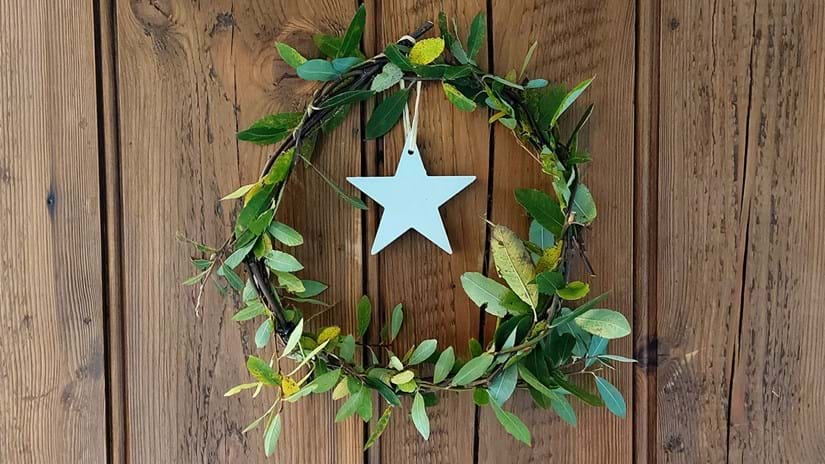
Credit: Ben Lee / WTML
Leaves
Around 6cm in length and comprised of toothed lobes, which cut at least halfway to the middle or 'mid-rib'. They turn yellow before falling in autumn.
Named after the month in which it blooms and a sign that spring is turning to summer. The pale green leaves of this hedgerow staple are often the first to appear in spring, with an explosion of pretty pale-pink blossom in May. It simply teems with wildlife from bugs to birds.
Common names: common hawthorn, hawthorn, May tree, one-seed hawthorn, whitethorn, quickthorn
Scientific name: Crataegus monogyna
Family: Rosaceae
Origin: native
Mature trees can reach a height of 15m and are characterised by their dense, thorny habit, though they can grow as a small tree with a single stem. The bark is brown-grey, knotted and fissured, and twigs are slender and brown and covered in thorns. It often hybridises with the UK’s other native hawthorn, Midland hawthorn (Crataegus laevigata). Both species are similar and can be hard to tell apart.
Look out for: the deeply lobed leaves, spiny twigs and haws (berries).
Identified in winter by: the spines which emerge from the same point as the buds; distinguishing them from blackthorn (Prunus spinosa) which has buds on the spines in winter .

Credit: Ben Lee / WTML
Around 6cm in length and comprised of toothed lobes, which cut at least halfway to the middle or 'mid-rib'. They turn yellow before falling in autumn.

Credit: Jane Corey / WTML
Hawthorns are hermaphrodite, meaning both male and female reproductive parts are contained within each flower. Flowers are highly scented, white or occasionally pink with five petals, and grow in flat-topped clusters.

Credit: Ben Lee / WTML
Once pollinated by insects, they develop into deep-red fruits known as 'haws'.
Midland hawthorn (Crataegus laevigata). The flowers of common hawthorn have a single stigma, whereas Midland hawthorn has two. The common hawthorn fruits have a single seed, whereas the fruits of Midland hawthorn have two seeds. The leaves of common hawthorn are not as deeply cut.

Have you noticed buds bursting into leaf or fruit ripening in the hedgerows? Tell us what's happening to the trees around you and help scientists track the effects of climate change on wildlife.
Take part in our Nature's Calendar surveyThis species is commonly found growing in hedgerows, woodland and scrub. It will grow in most soils, but flowers and fruits best in full sun.
Common hawthorn can support hundreds of other species. It is the foodplant for caterpillars of moths, including the hawthorn, orchard ermine, pear leaf blister, rhomboid tortrix, light emerald, lackey, vapourer, fruitlet-mining tortrix, small eggar and lappet moths. Its flowers are eaten by dormice and provide nectar and pollen for bees and other pollinating insects. The haws are rich in antioxidants and are eaten by migrating birds, such as redwings, fieldfares and thrushes, as well as small mammals.
The dense, thorny foliage makes fantastic nesting shelter for many species of bird.
Hawthorn is a pagan symbol of fertility and has ancient associations with May Day. It was the ancestor of the Maypole and its leaves and flowers the source of May Day garlands as well as appearing in the wreath of the Green Man.
Hawthorn was never brought into the home. It was believed that bringing hawthorn blossom inside would be followed by illness and death, and in medieval times it was said that hawthorn blossom smelled like the Great Plague. Botanists later learned that the chemical trimethylamine in hawthorn blossom is also one of the first chemicals formed in decaying animal tissue, so it is not surprising that hawthorn flowers are associated with death.
Its blossoming marks the point at which spring turns into summer, and the old saying ‘Cast ne’er a clout ere May is out’ almost certainly refers to the opening of hawthorn flowers rather than the end of the month.
Common hawthorn timber is a creamy-brown colour, finely grained and very hard. It can be used in turnery and engraving and to make veneers and cabinets, as well as boxes, tool handles and boat parts. It also makes good firewood and charcoal, and has a reputation for burning at high temperatures.
The young leaves, flower buds and young flowers are all edible. They can be added to green salads and grated root salads. The developing flower buds are particularly good. The haws can be eaten raw but may cause mild stomach upset. They are most commonly used to make jellies, wines and ketchups.
It has long been grown as a hedging plant and is a popular choice in wildlife gardens.

Helen Keating • 05 Dec 2022
Transform your home into a woodland wonderland this Christmas with our easy ideas for festive, foraged home decor.
Be inspiredHawthorn may be prone to aphid attack, gall mites and the bacterial disease, fireblight.